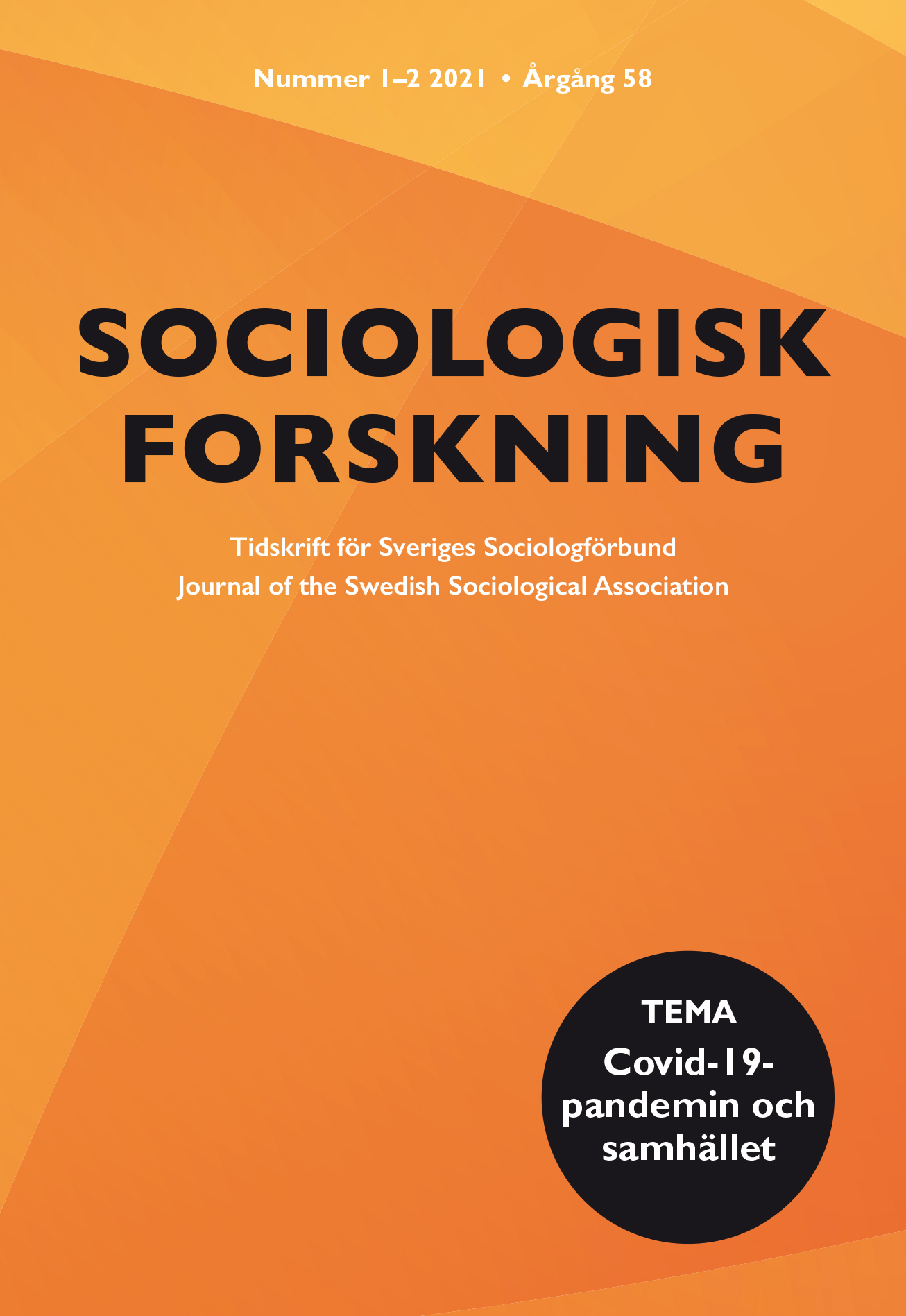The vulnerable community
Women’s shelters during the Covid-19-pandemic
DOI:
https://doi.org/10.37062/sf.58.22106Keywords:
risk, violence, biopolitics, immunitary life, vulnerability, Covid-19, Corona crisisAbstract
When the Covid-19 pandemic reached Sweden, women’s shelters mobilized quickly because they knew what a lockdown of public life could mean for women and children who are living with threats and violence in their homes. In a short time, recommendations by the authorities to work at home, maintain social distancing, and avoid travelling resulted in decreased possibilities for mobility. This made it particularly difficult for abused and controlled women to make contacts with the authorities and women’s shelters. The purpose of this article is to understand how the relationship between abused women and the community can be understood in times of pandemic. This is done by applying a theoretical model of “the immunitary life”, to understand the relation between the individual and the community. The study consists of telephone interviews conducted in the spring of 2020 with staff at five different women’s shelters. A central result in the study is that abused women, during the pandemic, are at risk of being deprived of opportunities to create the relationships with the community that women’s shelters otherwise enables.
Downloads
Published
How to Cite
Issue
Section
License
Copyright (c) 2021 Author and journal

This work is licensed under a Creative Commons Attribution-NonCommercial-NoDerivatives 4.0 International License.
All content in Sociologisk Forskning is published with immediate open access, under the Creative Commons license CC BY-NC-ND 4.0.
All content may be read, downloaded, shared and printed for non-commercial purposes, free and without fees. Contents may not be altered. When content is reused, author, source and a link to the copyright licence must be provided. The author retains copyright to their content. No publication fees are charged.





